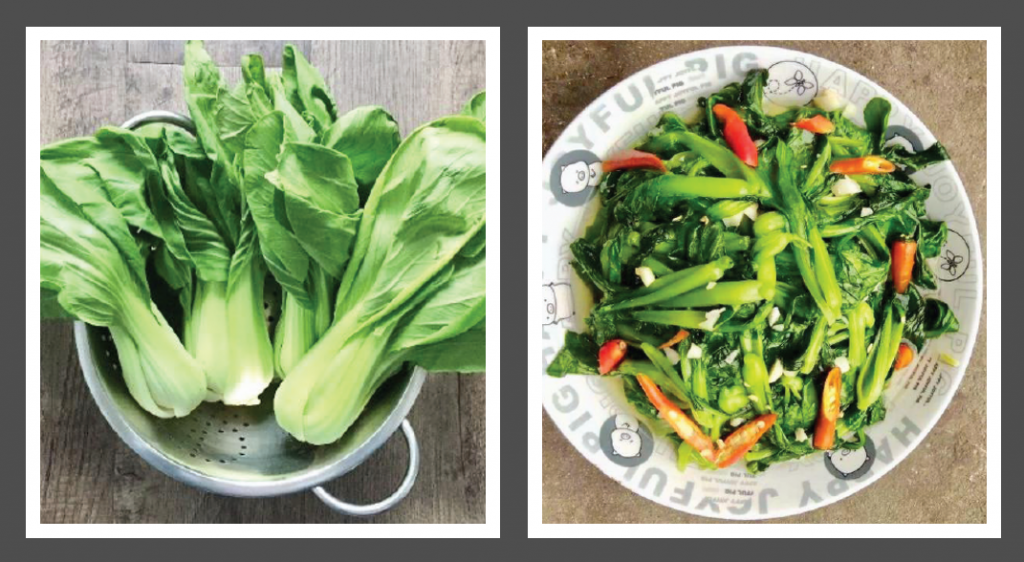Looking for a mid-season vegetable to plant in your garden? Look no further, Chinese cabbage is a great option. This cabbage matures quickly and is ideal for growing in winter’s shorter days and cooler temperatures.

Credit: Jieli Qiao, Guiyang, Guizhou, China
Growing Asian vegetable crops in Florida has become an increasing trend over the last decade, mostly due to health benefits and profitability by producers. However, the crop is new to many, who are interested in growing and consuming these vegetables. There are two sub-species of Chinese cabbage. The Pe-Tsai group are the broad leaved, compact heading varieties. The head may be six inches across and either round or cylindrical, in shape. The second group is known as Bok Choy (figure). These are non-heading Chinese cabbage varieties that have several thick, white leaf stalks, and smooth glossy, dark green leaf blades clustered together, similar to the way celery grows.
Again, cooler temperatures are key. Warm temps cause the plant to uptake more calcium, making the heads soft and bitter and may contribute to early seed development through bolting. Chinese cabbage matures in around forty to seventy-five days from planting, depending on variety. There’s no specific requirements to growing this cabbage in Florida, just follow the same soil preparation, liming, fertilization, and cultivation practices that you would use for other leafy vegetable garden crops. The main pests and diseases that occur are leaf blight, downy mildew, aphids, and cabbage caterpillars. Leaf blight and downy mildew usually occur in warmer times of the year, with higher temperatures and rain.
Chinese cabbage is very versatile. It’s great in salads, stir fry, pickled and even as a replacement for lettuce on your favorite sandwich. Enjoy!
For more information on Chinese cabbage, please contact your local county extension office.
Information for this article can be found at the UF/IFAS EDIS Publication, “Bok Choy, an Asian Leafy Green Vegetable Emerging in Florida”: http://edis.ifas.ufl.edu/hs1337 & “Cabbage, Chinese – Brassica Campestris L. (Pekinensis Group)”: http://edis.ifas.ufl.edu/mv036.
UF/IFAS Extension is an Equal Opportunity Institution.
- The Sunshine State is the Perfect Place for Sunflowers - July 20, 2025
- Why Are Sand Dunes & Sea Oats So Important? - March 20, 2025
- How to Care for a Gift Plant - December 5, 2024
